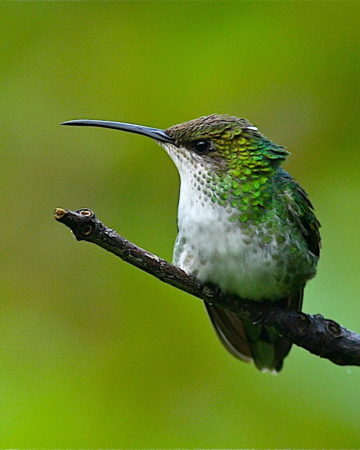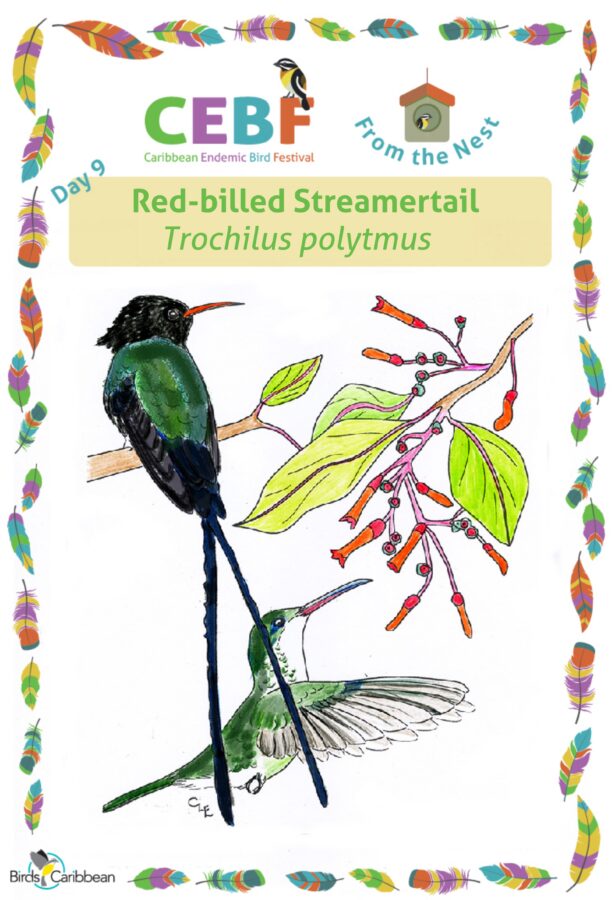Celebrate the Caribbean Endemic Bird Festival (CEBF) with us in our virtual “From the Nest” edition! Have fun learning about a new endemic bird every day. We have colouring pages, puzzles, activities, and more. Download for free and enjoy nature with your family at home.
Endemic Bird of the Day: Red-billed Streamertail
For a long time there has been much controversy about the taxonomy of Jamaica’s two endemic Streamertail hummingbirds, the Red-billed and the Black-billed; in other words, how closely related were they, and were they one species or two? These two similar hummingbirds were at first considered separate species, but were later lumped into one species: the Streamertail. More recent scientific evidence, however, has suggested that they are indeed two separate species after all—leading them to be split again! Thus, Jamaica hosts two species of this stunningly beautiful bird—the Red-billed Streamertail has a much wider range, covering most of the island, while the Black-Billed Streamertail is restricted to just a small area in the east.
Males of both species have two long, thin, fluted tail feathers that flow out behind them when they fly. Their bodies are iridescent, their emerald green breasts contrasting with their black heads with two little tufts at the back of their necks and dark wing feathers. The males of the two species differ, however, in the colours of their bills, their body size, and mating behaviour. The two species interbreed to some extent in the John Crow Mountains where their ranges overlap, providing a rare example of ‘within island speciation,’ where one species divides into two on a small island ecosystem.
Confusingly, the females of both species look very similar to each other but completely different from the males. Females have dark bills, white bellies, greenish backs—and no streamers.
Some people say that the males look like old-fashioned doctors, in their top hats and tailcoats, paying house calls to the flowers to give them injections with their long sharp bills. Perhaps this is why the local name is Doctor Bird. Or maybe it is because the original inhabitants of Jamaica, the Tainos, believed the birds had spiritual or healing powers. The world may never know how these birds got their name! Regardless, everyone agrees that they are vitally important, both ecologically and economically. This is because of the role they play in fertilizing flowers and fruits in the forests, gardens and orchards, from sea level to the mountain tops, as they fly from flower to flower, feeding on nectar and small insects. That is why they are Jamaica’s national bird. Learn more about this species, including its range, photos, and calls here.
Colour in the Red-billed Streamertail!
Download the page from Endemic Birds of the West Indies Colouring Book. Use the drawing above or photos below as your guide, or you can look up pictures of the bird online or in a bird field guide if you have one. Share your coloured-in page with us by posting it online and tagging us @BirdsCaribbean #CEBFfromthenest
Listen to the call of the Red-billed Streamertail
The call of the Red-billed Streamertail is sharp, high-pitched, metallic tseet, tseet, tseet, tseet. The wings of the male also produce a low-pitched whrrrrrr sound in flight.
Puzzle of the Day
Click on the image below to do the puzzle. You can make the puzzle as easy or as hard as you like – for example, 6, 8, or 12 pieces for young children, all the way up to 1,024 pieces for those that are up for a challenge!
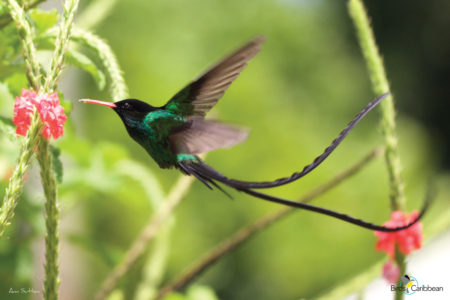
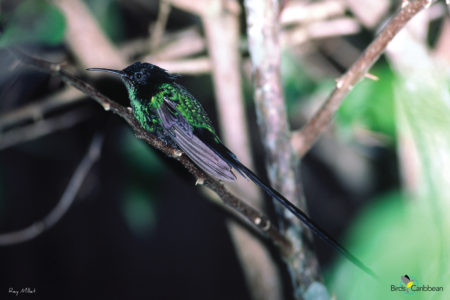
Activity of the Day
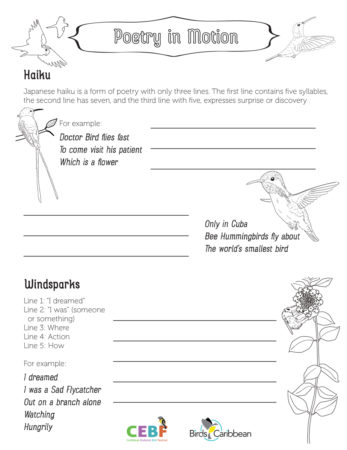
FOR KIDS & ADULTS: Try your hand at writing some bird-themed poetry! Haiku is a form of poetry written in only three lines, each with their own set number of syllables. Windsparks is another form of poetry with 5 lines. Chose your favorite endemic bird, create a Haiku or Windsparks poem, and then post it to us on social media (Facebook or twitter) by tagging us @BirdsCaribbean and/or use hashtag #CEBFFromtheNest. Or, send your poem to us via email (info@BirdsCaribbean.org). We’d love to see what everyone comes up with!
